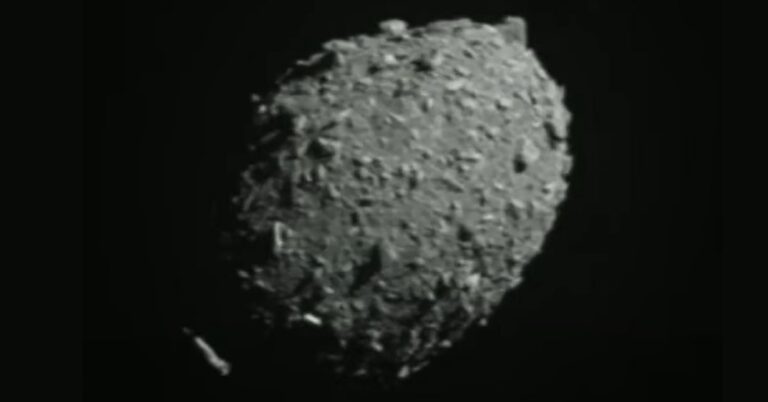
[ad_1]
“This is the first time we’ve actually attempted to move something in our solar system with the intent of preventing a [potential] natural disaster that has been part of our planet’s history from the beginning,” says Statler.
The DART probe—the name is short for the Double Asteroid Redirection Test—has been in the works since 2015. It was designed, built, and operated by Johns Hopkins University’s Applied Physics Laboratory, with support from many NASA centers, and launched last November. DART is a major part of AIDA, the Asteroid Impact and Deflection Assessment, a collaboration between NASA and the European Space Agency. The mission also depends on observatories in Arizona, New Mexico, Chile, and elsewhere; astronomers are keeping their telescopes focused on Dimorphos and Didymos to measure the post-impact deflection as precisely as possible.
Until the very end of DART’s flight, astronomers could only see Dimorphos and Didymos as a single dot of light. The smaller asteroid is so tiny it can’t be seen from Earth telescopes—but astronomers can track it by measuring how often it dims the already faint light from its bigger sibling as it orbits around it.
The craft’s final approach was captured by its optical camera, called DRACO, which is similar to the camera aboard New Horizons, which flew by Pluto. Even this much more close-up camera was only able to see Dimorphos as a separate object a few hours before impact.
“Because you’re coming in so fast, it’s only within the last few minutes that we’ll get to see what Dimorphos looks like: What is the shape of this asteroid we’ve never seen before?” said Nancy Chabot, planetary scientist at Johns Hopkins University and DART’s coordination lead, in an interview a few days before the impact. “It’s really only within the last 30 seconds that we’ll resolve surface features on the asteroid.”
In fact, until today, scientists weren’t really sure whether the asteroid would be more like a billiard ball or a dust ball. “Is this moon a single giant rock, or is it a collection of pebbles or particles? We don’t know,” said Carolyn Ernst, a JHU researcher and DRACO instrument scientist, speaking before the impact. Its makeup could affect a number of variables scientists want to study: How much the crash will alter the asteroid’s trajectory, if it’ll leave an impact crater, rotate the asteroid, or eject rock fragments.
Unlike most space probes, DART didn’t slow down before reaching its target. As it approached, its camera continually took images of the asteroid as it grew in the frame, sending them to Earth via the Deep Space Network, an international system of antennas managed by NASA’s Jet Propulsion Laboratory.
Those images aren’t just important for research; they’re key for navigation. It takes 38 seconds for human operators to send signals to DART—or for the probe to send images back to Earth. When the timing was critical, it was necessary for the probe to pilot itself. Within the last 20 minutes, its SMART Nav automated system made a “precision lock” on the target and used these images to adjust the spacecraft’s course with thruster engines.
[ad_2]